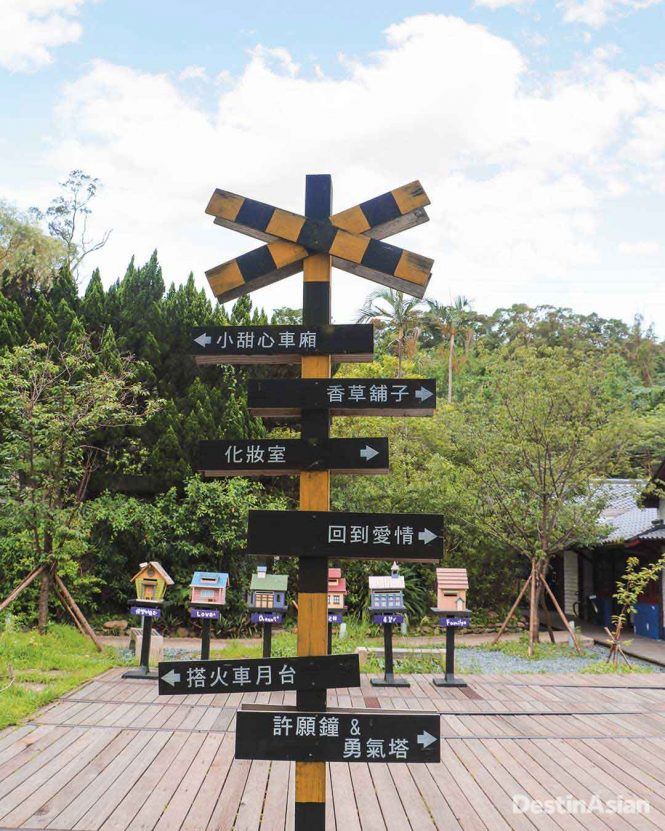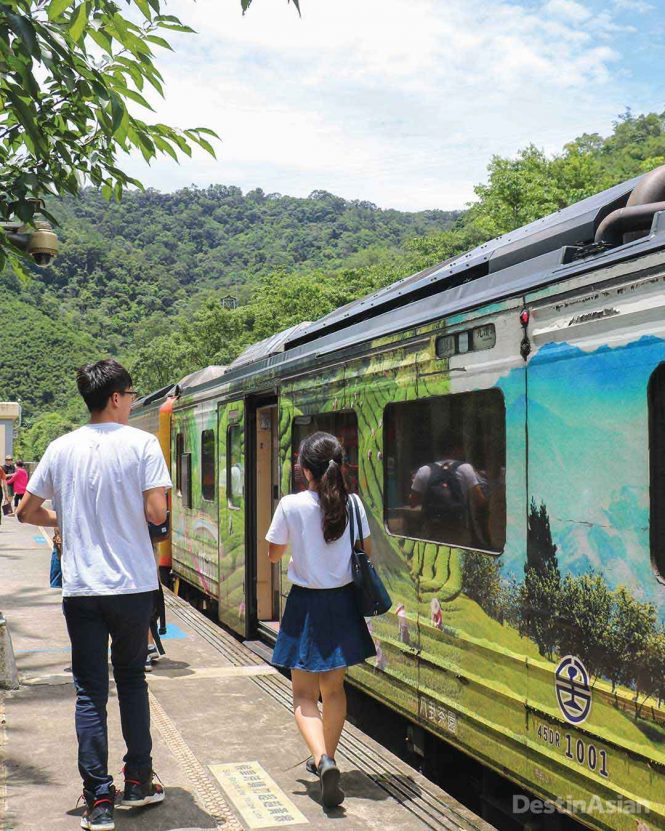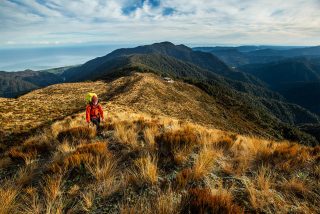The following day I catch a bus to what the tourist literature asserts is the “religious heart” of north Taiwan’s Hakka community: Fangliao Yimin Temple, constructed to commemorate the Hakka militia killed during an 18th-century rebellion. It’s an impressive hillside complex, its orange roofs adorned by bright colorful dragons and phoenixes that peer back at the cityscape of the coastal lowlands. The temple is perhaps best known for its controversial Yimin Festival, during which a legion of overfed hogs are killed, their carcasses then stretched over a metal cage for all to see. Animal rights activists are understandably outraged, though the Hakka faithful defend the sacrifice of “Pig Gods” as a traditional part of their culture. Thankfully, no swine are slain during my visit, and I am able to meditate quietly in the temple, which is dedicated to both Taoist and Buddhist saints, a common mélange in Taiwan.

A stop on the Neiwan Line, whose trains shuttle sightseers from Hsinchu City to the Hakka villages of Taiwan’s verdant interior.
Another train takes me inland through Hsinchu County’s old industrial lands. This time I’m riding the Neiwan Line, a Japanese-built branch track that cuts past abandoned factories before giving way to the brilliant bamboo groves that presumably earned Hsinchu (meaning “New Bamboo”) its name. The railway is now popular with day-trippers heading to Neiwan village, its terminus, where they can soak up a landscape of verdant hills and crystalline streams while gorging on another Hakka specialty, ginger leaf–wrapped zongzi (glutinous rice dumplings), the most celebrated of which are handmade by local matriarchs Auntie Jane and Mama Luo.

After lunch, I stroll about town taking in handicraft stores before crossing a deep ravine via a suspension bridge. On the other side I discover, quite unexpectedly, the Venice-Neiwan Hot Springs Resort. Having been on the road for some time I’m in need of some pampering. After inquiring at the desk I discover it’s well within my means to pay for a good hour’s soak in a private hot tub. Who could resist?
My next stop is Beipu Township, one of the oldest and best-preserved Hakka settlements in the region. 40 minutes by train and shuttle bus south of Hsinchu, it’s a delightfully pokey little place comprising just a few streets and tangled alleyways. The bulk of its heritage is clustered in the center, a mix of traditional red- and mud-brick houses. Many of these are linked to the wealthy Jiang family, including the evocative Tian Shuei Tang compound, a Hakka-style mansion dating back to 1832.
Of course, this being Taiwan, eating out is the order of the day: every other house in Beipu has been decked out as a facsimile rural Hakka house with wooden signs advertising Hakka tea, fried mountain pork, or sticky rice pastry.
I gorge myself on tofu and rice before continuing south to my final destination, the Lion’s Head Mountain Scenic Area. This national park covers an impressive 242 square kilometers of forest-carpeted terrain in both Hsinchu and Miaoli counties. Popular with hikers, it’s also an important place of pilgrimage for Taiwanese Buddhists.
For a road-weary wanderer for whom some seclusion is in order, Lion’s Head delivers. I find fabulous lodgings in the Shishan Dalou, a remarkable hotel built into the cliff face beneath the stunningly ornate Quanhua Temple. The furnishings are a bit dated but the staggering views of the river valley more than compensate. Also, my room includes three free vegan meals a day in the monastery’s humble canteen.
Despite the humidity, I spend the next few days hiking mountain paths, resting at isolated pavilions, and even clandestinely swimming in the rivers that cleave their way through the park’s lush expanse. The cacophony of insects and birds fills the forest with a character of its own—something almost spiritual, I sense. For having left thronging Taipei a week ago, I find myself some way beyond the humdrum human world. As always, the best journeys take us not just through space but time as well, and if you get it right, you learn something along the way, and feel it inside.
Where to Stay
While Hsinchu City can be explored as a day trip from Taipei (it’s an hour away by express train), those wishing to use it as a hub for further explorations of the surrounding county will want to consider booking a room at the centrally located Sol Hotel (886-3/534-7266; doubles from US$165). Run by Quanhua Temple in the Lion’s Head Mountain Scenic Area, Shishan Dalou (886-3/782-2563; US$35) offers modest rooms with fine views of the valley below.
Resources
For train schedules and trip planning, visit the Taiwan Railways Administration website at railway.gov.tw
This article originally appeared in the October/November 2017 print issue of DestinAsian magazine (“The Hakka Way”).







